How to Use a Quote Invoice Template for Your Business
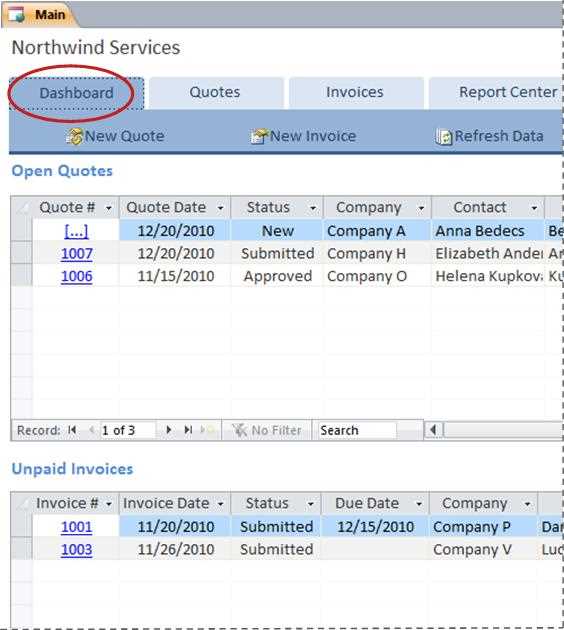
When managing a business, providing clear and detailed pricing documents is essential for maintaining transparency and professionalism. These documents help clients understand the scope of services, terms, and costs before making a commitment. Whether you’re a freelancer, a contractor, or a small business owner, having a well-organized structure for these agreements can significantly streamline the transaction process.
By using a structured approach to presenting your pricing and service details, you ensure that both parties are on the same page, reducing the risk of misunderstandings or disputes. With the right tools, it’s easier than ever to create these essential papers efficiently and effectively, saving you time and effort while enhancing your professional image.
Customizing these documents allows you to align them with your business needs, offering flexibility in presentation and content. Whether you choose digital or printed formats, having a reliable framework ensures consistency and clarity every time you interact with a potential customer.
Quote Invoice Template Overview
In business, providing clients with clear, structured documents that outline costs and terms is essential for building trust and facilitating smooth transactions. These documents serve as formal proposals that detail the services offered, associated costs, payment terms, and other relevant information. Having a professional layout ensures that the agreement is easy to understand, leaving little room for confusion.
By using a standardized structure, you can save time on each new document while ensuring consistency in every communication. The flexibility of these documents allows businesses to tailor them to their needs, whether it’s for a one-time project or ongoing services. These customized forms not only help present your services more effectively but also enhance your overall client experience.
Why a Structured Document is Important
When dealing with clients, having a clear breakdown of prices and conditions helps to avoid misunderstandings. A structured document helps both parties stay aligned and can serve as a point of reference throughout the project. It also makes it easier to track agreements and ensure compliance with terms. Whether you are working with a new client or renewing a contract, these documents act as vital tools for communication and transparency.
Key Features to Include
While the specifics of these documents can vary, there are a few core components that should always be present. A detailed description of the services, the agreed-upon prices, payment schedules, and any applicable taxes or fees should be clearly listed. Additionally, including contact details, your business logo, and any terms and conditions related to cancellations or changes will help ensure the document’s comprehensiveness.
Why Use a Quote Invoice Template
Having a standardized approach to preparing business documents for client agreements offers several advantages. By utilizing a ready-made structure, you streamline your workflow, minimize errors, and ensure consistency across all transactions. These pre-designed formats help you present professional and clear proposals without the need to start from scratch each time.
Here are some key reasons why using a preformatted document is beneficial for your business:
- Time Efficiency: Instead of creating a new document from the ground up, you can easily modify existing content to suit the current project.
- Consistency: Using the same structure for all client proposals ensures that the information is organized in a way that’s easy to understand and follow.
- Professional Appearance: A well-designed document reflects positively on your business, showcasing your attention to detail and commitment to professionalism.
- Reduced Errors: With a set format, you reduce the risk of missing important details or making mistakes that could lead to confusion or misunderstandings.
Additionally, a good document can act as a protective measure, ensuring that both parties are clear about the terms and conditions of the agreement. It can help establish mutual expectations and minimize disputes, creating a smoother experience for both you and your clients.
How to Create a Quote Invoice
Creating a professional pricing proposal document involves several key steps to ensure that all necessary details are included and presented clearly. By following a structured approach, you can provide clients with a transparent overview of costs, services, and terms, helping to set expectations and avoid misunderstandings. Whether you’re using software or designing one manually, the process remains similar and can be customized based on your business needs.
Here are the main steps to create an effective document for your client:
- Start with Your Business Information: Include your company name, address, phone number, and email at the top. This establishes your identity and makes it easy for clients to contact you.
- Client Details: Add the client’s name, business name (if applicable), and contact information. Make sure all the details are correct to avoid confusion later.
- Describe the Services or Products: Clearly outline what is being offered, breaking down the specifics of each service or product. This ensures that both you and your client are aligned on expectations.
- Provide the Pricing: List the cost of each item or service, including any discounts or special offers. Be transparent about any additional fees, taxes, or extra charges.
- Define Payment Terms: Specify the payment methods you accept, payment due dates, and any penalties for late payments. Clear terms will help prevent confusion or delays.
- Include Expiration Date: Add a date by which the terms or pricing will expire. This creates urgency and helps you lock in the terms while they are still relevant.
- Final Review: Go over all the details carefully, ensuring that nothing is missing and everything is accurate. A mistake in the document could affect your relationship with the client.
By following these steps, you’ll be able to produce a document that is not only clear and professional but also effective in helping clients make informed decisions. This will contribute to smooth negotiations and foster trust in your business dealings.
Benefits of Customizing Invoice Templates
Customizing your business documents allows you to better align them with your specific needs, improving both functionality and client perception. A one-size-fits-all approach may not be suitable for every client or project, and customization provides the flexibility to highlight unique aspects of your services, pricing, and terms. With tailored documents, you create a more professional image while enhancing efficiency and communication.
Enhance Professionalism and Branding
When you tailor documents to reflect your brand’s identity, it reinforces your business’s professionalism. Including elements like your company logo, brand colors, and specific layout styles ensures that the documents are consistent with your overall branding, helping to make a lasting impression on clients.
Improve Clarity and Understanding
Customizing your documents enables you to make them more relevant to the particular services or products you offer. By structuring the information in a way that’s easy to understand and removing irrelevant details, you ensure that clients can quickly grasp the terms of the agreement and pricing breakdowns, reducing the chance of confusion or disputes.
| Benefit | Description |
|---|---|
| Better Client Experience | Tailored documents show clients that you are attentive to their specific needs, making the process smoother and more personal. |
| Consistency | Customized documents help maintain a consistent format across all your business communications, enhancing organization and professionalism. |
| Time Efficiency | Once you have a custom layout, you save time on future documents as you only need to adjust the details instead of starting from scratch. |
Ultimately, customizing your business documents can lead to better client relationships, smoother transactions, and a stronger brand presence. It ensures that each communication is purposeful and tailored to meet both your needs and those of your clients.
Essential Elements of a Quote Invoice
When preparing a formal proposal or pricing document, certain components are crucial for ensuring that the information is clear, professional, and comprehensive. These essential elements help establish the terms of the agreement, outline the services offered, and set expectations regarding payment. A well-structured document serves not only as a record but also as a communication tool between you and your client.
Key Information to Include
To ensure clarity and professionalism, it’s important to include the following details in every pricing document:
- Business and Client Information: Your company’s name, address, and contact details, as well as the client’s information, should be included at the top. This establishes a clear point of contact for both parties.
- Detailed Service Description: A clear breakdown of the services or products offered, including quantities, specifications, or any other important details that provide context for the costs.
- Pricing Breakdown: Each service or product should have its cost clearly listed, along with any applicable taxes, discounts, or additional fees. Transparency in pricing is essential to avoid misunderstandings.
- Terms and Conditions: Specify payment terms, deadlines, and any other conditions, such as warranties or cancellation policies. Clear terms protect both parties and set expectations.
Formatting and Presentation
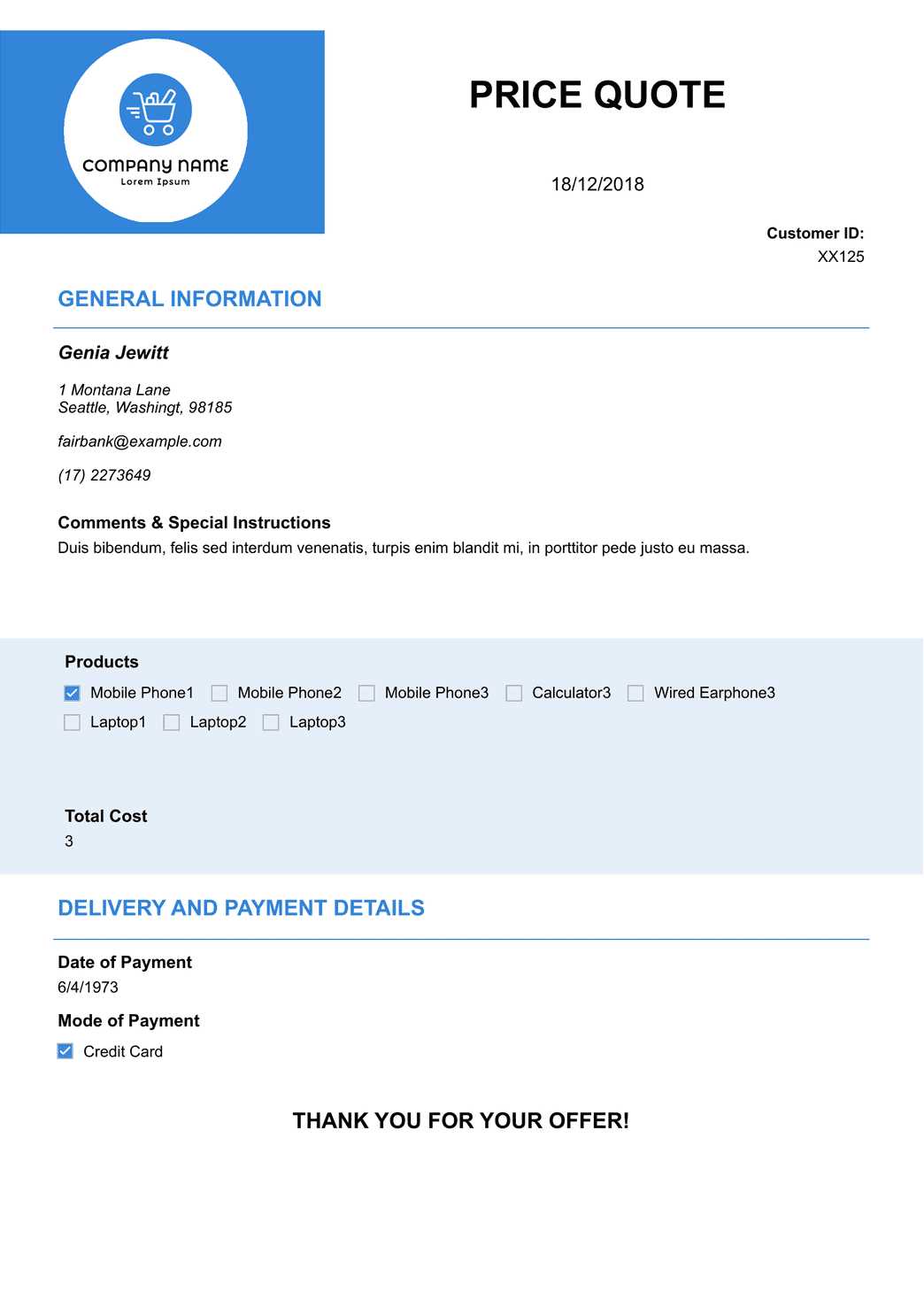
While the content is important, how the information is presented also matters. A clean, organized layout helps clients easily navigate through the document and find relevant details quickly. Use bold headings, bullet points, and clearly separated sections to enhance readability. A professional appearance can strengthen your business’s image and make the document more effective.
Best Quote Invoice Templates to Download
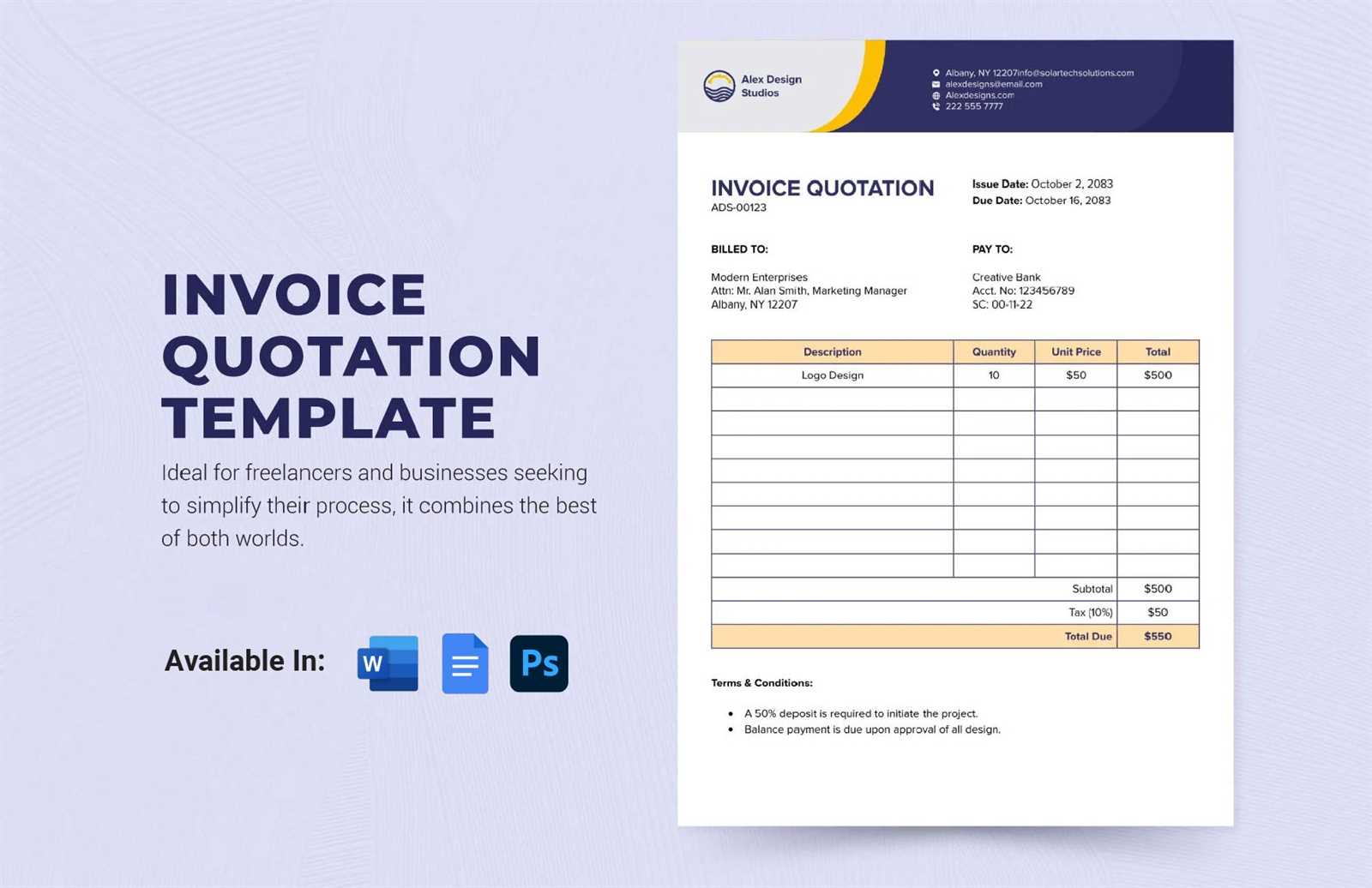
Finding the right format for your pricing documents is crucial for ensuring that all necessary details are organized and clearly presented. The best pre-designed layouts offer flexibility, ease of use, and a professional appearance, allowing you to customize the content to meet your specific business needs. Whether you’re looking for a minimalist design or a more detailed structure, there are numerous options available that can help you create accurate and effective proposals quickly.
Here are some of the top formats to consider downloading for your business:
- Simple Pricing Layout: Ideal for small projects or straightforward transactions, this design keeps things clear and easy to understand, with a focus on cost breakdown and payment terms.
- Detailed Service Breakdown: Perfect for businesses offering a range of services, this layout allows for in-depth descriptions and itemized costs, ensuring that clients fully understand what they are paying for.
- Modern and Clean Design: For businesses that want a contemporary look, this option combines a sleek, professional appearance with a user-friendly format, perfect for impressing clients while remaining functional.
- Customizable Fields for Special Requests: If your business deals with custom or unique projects, look for a layout that allows you to add custom fields for special instructions, terms, or additional fees.
These designs are easy to download, edit, and personalize to suit your business style. By using the right format, you save time and ensure consistency across all your client communications, ultimately enhancing both efficiency and professionalism.
Common Mistakes to Avoid in Invoices
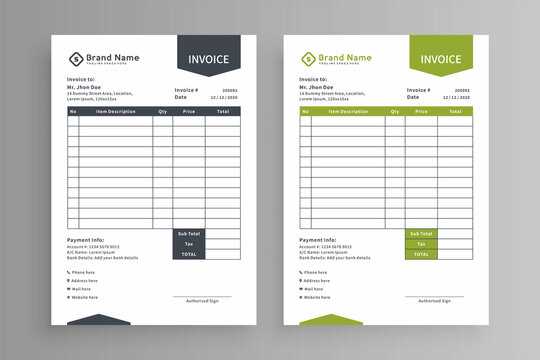
When preparing a formal pricing or service agreement document, it’s easy to overlook details that can lead to confusion or delays in payment. Small mistakes, like unclear descriptions or missing information, can create unnecessary friction between you and your clients. By understanding the most common errors and knowing how to avoid them, you can ensure your documents are both professional and effective.
Here are some of the most frequent mistakes to watch out for:
- Missing Contact Information: Failing to include your business’s full contact details, or the client’s information, can lead to confusion or difficulty in reaching either party if needed. Always double-check that these details are correct and clearly visible.
- Unclear Descriptions of Services: Vague or ambiguous descriptions of what’s being provided can lead to misunderstandings. Ensure each service or product is well-defined, with clear quantities and specifications.
- Inaccurate Pricing or Calculations: Incorrectly listing prices or miscalculating totals is a critical error that can damage trust with your client. Always double-check the numbers and be transparent about any discounts, taxes, or additional fees.
- Omitting Payment Terms: Not clearly outlining payment terms, such as due dates, late fees, or accepted methods, can result in delayed payments. Always make sure these terms are well-defined and easy to understand.
- Not Including an Expiration Date: Failing to set a deadline for your pricing can cause confusion later. An expiration date ensures that the terms are valid for a limited period, giving both parties a clear time frame for making decisions.
By avoiding these mistakes, you can create more effective documents that streamline your business transactions, improve client trust, and reduce the risk of disputes or delays in payment.
How to Personalize Your Quote Invoice
Customizing your pricing and service documents is an effective way to make a lasting impression on clients while ensuring the information aligns with your business’s identity and the specific needs of each project. Personalization can include everything from the design and layout to the details of the services provided. A tailored approach not only enhances professionalism but also helps foster stronger relationships with clients.
Steps to Customize Your Document
Here are some ways to personalize your pricing documents for maximum impact:
- Add Your Branding: Include your company logo, brand colors, and any other elements that represent your business identity. A branded document feels more professional and trustworthy.
- Use a Unique Layout: Choose a layout that reflects the nature of your business. For example, creative businesses might prefer a more visually appealing design, while service-based businesses may opt for a clean, straightforward format.
- Tailor Descriptions to the Client: Instead of using generic descriptions, personalize them based on the client’s needs. Show that you understand their specific requirements by providing tailored details of the services or products you are offering.
- Include Custom Terms and Conditions: Every project or client may require different terms, such as payment schedules, special conditions, or warranties. Personalizing these sections can help avoid misunderstandings later.
- Use Professional Fonts and Formatting: Consistent font choices and a well-organized format can significantly improve readability and present a polished, high-quality document.
Why Personalization Matters
Personalized documents stand out and help establish a connection with clients. By showing that you’ve taken the time to create a tailored proposal, you demonstrate professionalism and attention to detail. This can lead to a higher level of trust and more successful business relationships.
Integrating Payment Terms in Quotes
Clearly outlining payment terms in business documents is crucial for managing client expectations and ensuring smooth financial transactions. By specifying when payments are due, how they should be made, and any penalties for late payments, you set clear guidelines that help prevent misunderstandings and delays. Payment terms serve as a protective measure for both parties, creating a foundation of transparency and trust.
Key Elements of Payment Terms
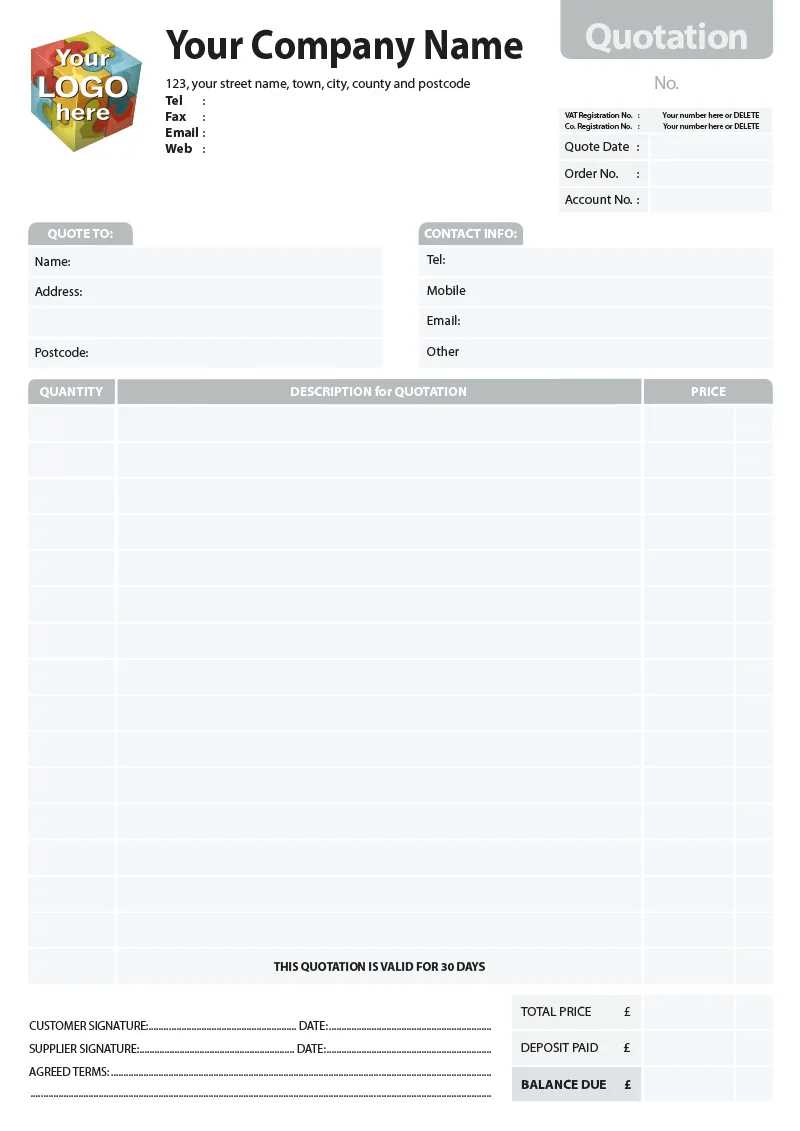
To ensure your terms are comprehensive and easily understood, include the following details in your business agreements:
- Payment Due Date: Always specify the exact date or time frame by which the client should complete their payment. Common terms include “within 30 days of receipt” or “due upon completion of work.”
- Accepted Payment Methods: Be clear about which payment methods are acceptable–whether it’s bank transfer, credit card, online payment platform, or cash. This will avoid confusion about how clients can pay.
- Late Payment Fees: It’s important to outline any penalties or interest that may apply if payments are not made on time. This can encourage timely payments and protect your cash flow.
- Deposits or Advance Payments: For larger projects, it’s common to request an upfront payment or deposit. Clearly state the percentage required and when it is due (e.g., “50% deposit before work begins”).
- Discounts for Early Payment: Offering a discount for early payment can incentivize clients to settle their bills ahead of time. Include the discount amount and the conditions under which it applies.
Why Clear Payment Terms Matter
By integrating clear payment terms, you establish a professional and fair framework for all transactions. This helps prevent confusion and ensures that both you and your clients are on the same page regarding payment expectations. Well-defined terms contribute to smoother project execution and better business relationships.
How Quote Invoices Improve Business Efficiency
Using structured pricing documents can significantly streamline business operations, saving time, reducing errors, and enhancing communication. By adopting a standardized approach to presenting costs and terms, businesses are able to quickly generate proposals, track agreements, and ensure consistent client interactions. This efficiency leads to faster decision-making, smoother workflows, and a more professional image in the eyes of clients.
Key Ways These Documents Boost Efficiency
- Faster Document Creation: With a pre-designed structure, creating a new document for each client or project becomes a quick process. You only need to adjust the relevant details, cutting down on the time spent drafting each new proposal.
- Consistency in Communication: Using a set format ensures that the same key information is presented in every document. This consistency helps clients quickly find what they need and reduces the risk of leaving out important details.
- Reduced Errors: By having a template that includes all necessary fields, you minimize the chances of forgetting essential details like pricing, terms, or client information. This reduces the need for revisions and enhances accuracy.
- Improved Client Experience: With clear and professional documents, clients can quickly understand the services, costs, and payment terms. This clarity builds trust and can lead to faster decision-making, helping to close deals more efficiently.
- Better Tracking and Record-Keeping: Standardized documents are easier to organize, making it simpler to track progress, follow up on outstanding payments, or refer back to past agreements.
Why Efficiency Matters for Your Business
Efficiency is key to scaling a business and maintaining strong client relationships. By improving the speed and accuracy of your proposals, you can spend more time focusing on delivering excellent service, rather than getting bogged down in administrative tasks. The more efficient your document process, the more time and energy you can dedicate to growing your business and serving your clients effectively.
Digital vs. Paper Quote Invoices
In today’s business world, the method you choose for delivering your pricing and service agreements can have a significant impact on efficiency, accuracy, and overall client experience. The debate between digital and paper documents is common, with each option offering distinct advantages and challenges. Understanding the benefits and limitations of both approaches helps businesses decide which one best suits their needs and operations.
Advantages of Digital Documents
Digital documents have become the preferred choice for many businesses due to their convenience, speed, and environmental benefits. Here are the key advantages:
- Speed: Sending documents electronically is instant, allowing you to quickly provide clients with the information they need without delays.
- Accessibility: Digital formats can be accessed anywhere, whether on a laptop, tablet, or smartphone. This makes it easier for clients to review and respond, regardless of location.
- Cost-Effective: There are no printing or postage costs with digital documents, which can save your business money in the long run.
- Easy to Edit and Update: Digital documents can be quickly modified and resent, making revisions faster and more efficient than reprinting physical copies.
- Organization: Storing digital documents is more organized and secure, with easy access through cloud storage or document management systems.
Benefits of Paper Documents
While digital documents offer many advantages, there are still reasons why some businesses and clients prefer paper-based agreements. Here are some of the benefits:
- Personal Touch: Paper documents can feel more formal and personal, creating a sense of professionalism and seriousness, especially in face-to-face meetings.
- Client Preferences: Some clients may prefer paper documents, especially older generations or businesses that are not as comfortable with digital formats.
- Less Risk of Technical Issues: With paper, there’s no risk of technical glitches, email delivery failures, or compatibility problems with software or devices.
- Physical Record: Paper provides a tangible, physical copy that can be stored, signed, and archived without needing technology for access.
Ultimately, the choice between digital and paper documents depends on your business’s needs, the preferences of your clients, and the level of convenience you seek. Many businesses are adopting a hybrid approach, offering both options depending on the client’s prefer
Tools for Designing Your Invoice Template
Creating a well-designed document for your business proposals or billing is essential for maintaining a professional image and ensuring clarity in communication. A custom design allows you to tailor the layout to fit your brand and make the necessary information easy for clients to read and understand. Fortunately, there are various tools available that make designing these documents simple, even for those without graphic design experience.
Best Design Tools for Your Documents
These tools provide all the functionality you need to create professional-looking documents without requiring advanced design skills:
- Canva: A user-friendly design platform that offers customizable templates for all types of business documents. Canva provides a wide range of fonts, graphics, and layout options that can help you create a polished and visually appealing document in just a few clicks.
- Microsoft Word: A classic word processing tool that many businesses already use. With built-in templates and easy customization options, Word allows you to create simple yet effective documents that can be personalized with your logo and brand colors.
- Google Docs: An accessible and free alternative to Microsoft Word, Google Docs allows for real-time collaboration and cloud storage. It’s ideal for businesses that need to create and share documents quickly and efficiently.
- Adobe InDesign: For more advanced users, InDesign is a powerful graphic design tool that enables you to create highly customized, professional documents. It offers more control ove
How to Send Quote Invoices to Clients
Once your pricing document is ready, sending it to your client in a clear and professional manner is the next important step. The way you deliver your proposals or service agreements can influence the client’s perception of your business and help ensure a smooth process for final approval. Choosing the right method for delivery, along with proper follow-up, can make a significant difference in how quickly and easily a client responds.
Methods for Sending Your Pricing Documents
There are several ways to send your business documents to clients, each with its own advantages. Below are the most common and effective methods:
- Email: Sending the document via email is the fastest and most common method. Attach the document as a PDF to ensure that the format remains consistent, and include a polite message in the email body that explains what the client can expect from the proposal.
- Online Platforms: Tools like FreshBooks, QuickBooks, or Zoho allow you to send professional business documents directly through their platforms. These tools offer easy tracking, automatic reminders, and online payment options, making the process seamless for both parties.
- Cloud Storage Links: If the file is too large to email or you want to keep your document editable, you can upload it to cloud storage platforms like Google Drive or Dropbox and share the link with your client. This method is useful for larger projects that might require frequent revisions or updates.
- Postal Mail: While less common in the digital age, sending physical copies can still be appropriate for certain clients or more formal industries. Ensure the document is professionally printed and delivered in a timely manner to maintain credibility.
Best Practices for Sending Documents
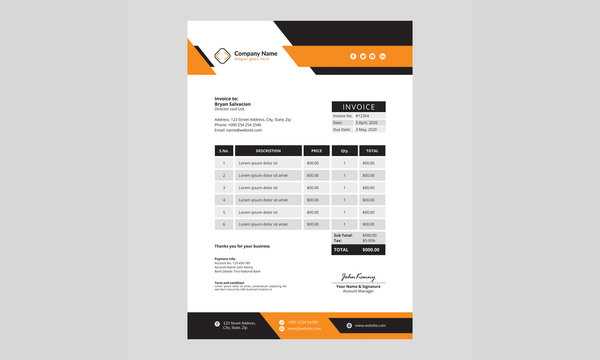
Regardless of the delivery method you choose, following these best practices will ensure a smooth process:
- Double-check the Document: Before sending, review the document one last time to ensure all details are correct, including pricing, terms, and the client’s information.
- Include a Clear Subject Line: If sending by email, the subject line should clearly describe the purpose of the email (e.g., “Service Agreement for [Client Name] – [Project Name]”). This helps the client easily locate and prioritize your message.
- Set Expectations for Follow-Up: Let the client know when you plan to follow up. You can say something like, “I will check in with you in two business days to discuss any questions or feedback you might have.” This provides clarity and demonstrates professionalism.
- Maintain a Professional Tone: Whether you’re communicating via email or physical mail, always ensure your message is courteous, concise, and professional. A well-crafted message can positively impact how the client perceives your business.
- Business Identification Information: Your business name, address, and tax identification number should be clearly stated. This helps to verify your identity and ensures the document is linked to a legitimate business.
- Client Identification: The client’s full name or company name, address, and contact details should be listed. This is essential for proper record-keeping and any potential legal disputes.
- Itemized Breakdown: A detailed list of the products or services being offered, including quantities, prices, and descriptions, is typically required to avoid ambiguity.
- Payment Terms: Clear terms outlining the payment due date, method of payment, and any late fees or discounts for early payments must be included to protect both parties.
- Tax Information: Depending on your jurisdiction, you may need to include applicable taxes (e.g., VAT or sales tax), along with your business’s tax registration number.
- Unique Reference Number: Many legal systems require a unique document reference number for each business document. This ensures traceability and makes it easier to manage records.
- Cloud Storage Solutions: Platforms like Google Drive, Dropbox, or OneDrive allow you to store and organize multiple documents in one place. You can categorize files by client or project, making it easier to access and update them as needed.
- Project Management Software: Tools like Trello, Asana, or Monday.com can help you track progress for each document, set deadlines, and assign tasks to team members. This makes it easier to stay on top of multiple proposals or billing cycles simultaneously.
- Accounting Software: Programs such as QuickBooks, FreshBooks, or Zoho Books help you manage all your financial documents in one place. These tools allow you to track payments, set reminders, and even automate recurring transactions.
- Document Management Systems: For more advanced needs, you can use dedicated document management platforms like DocuSign or PandaDoc, which allow you to create, manage, and track all business-related documents in one secure location.
- Establish Clear File Naming Conventions: Use consistent and descriptive file names that include the client name, project, and document type. For example, “ClientName_ProjectName_ServiceAgreement.” This will make it easier to find specific documents when needed.
- Set Deadlines and Reminders: Keep track of when documents need to be reviewed, approved, or paid. Use calendar reminders or task management tools to avoid missing important deadlines.
- Organize by Client or Project: Group related documents together by client or project to streamline access. You can create folders for each client or project and store all associated documents in those locations.
- Use Version Control: For documents that are edited multiple times, keep track of revisions and maintain a version history. This ensures that the latest version is always accessible and prevents confusion about which version is current.
- Automate Where Possible: Automating tasks such as document creation, follow-ups, and reminders can significantly reduce the time spent on manual processes. Many software solutions allow you to set up recurring tasks and reminders for overdue documents.
Legal Requirements for Quote Invoices
When preparing and sending formal pricing or billing documents, businesses must comply with certain legal requirements to ensure that these documents are valid and enforceable. Depending on the country or region, specific information needs to be included in these documents to meet legal standards and avoid disputes. These requirements not only protect your business but also establish transparency and trust with clients.
Key legal considerations include providing clear and accurate details about the services or products offered, specifying payment terms, and including any required business registration or tax information. Failure to meet these legal standards could lead to complications, such as non-payment, legal challenges, or regulatory penalties. Understanding and incorporating these essential elements is crucial for running a compliant and trustworthy business.
Some of the typical legal requirements include:
By understanding and adhering to these legal requirements, you not only avoid potential legal issues but also enhance your business’s reputation as a professional and responsible entity. It’s always a good idea to consult with a legal expert or accountant to ensure that your documents are fully compliant with local regulations.
Managing Multiple Quote Invoices at Once
Handling several business proposals or billing documents simultaneously can be a challenging task, especially when dealing with numerous clients and different projects. Keeping track of all the details, deadlines, and payment terms requires a structured approach to avoid confusion and ensure smooth operations. Effective management of these documents helps maintain organization, improve workflow, and prevent errors that can lead to delays or misunderstandings.
To efficiently manage multiple business documents at once, it’s important to use the right tools and strategies that allow you to stay organized and track each document’s status. By adopting a systemized approach, you can handle a larger volume of work with less stress and ensure that nothing is overlooked.
Tools to Help Manage Multiple Documents
Best Practices for Managing Multiple Documents
Implementing the following strategies will help you stay organized and improve efficiency when managing a large number of business documents:
By utilizing the right tools and best practices, you can effectively manage multiple business documents at once, keeping your workflow organized and ensuring that everything is handled in a timely and professional manner.